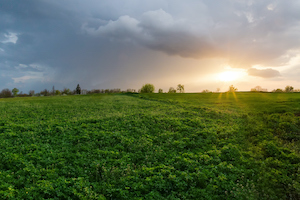As the weather continues to warm across the country, agricultural producers in Kansas are beginning to spot cowpea and pea aphids in their alfalfa fields. Now, Kansas State University crop entomologist Jeff Whitworth is providing insight into how farmers can control the insects across their acreage.
Although cowpea and pea aphids are not uncommon, especially in the summer, Whitworth notes that the amount of them being seen is more typical of June or July.
“Alfalfa is a good host for beneficial insects, so when we see lady beetles over winter and they start going around feeding they’ll find some cowpea aphids or pea aphids because they arrive early in the season,” Whitworth says. “I still have a hard time recommending treating for aphids, whether they’re cowpea aphids or pea aphids.”
Although Whitworth says it may not be necessary for agricultural producers to treat for aphids just yet, those considering it might want to use an insecticide specifically made for alfalfa aphids. Spraying for alfalfa weevils will reduce aphid populations. However, Whitworth notes that this should only be done once the weevils can be found on at least 50% of alfalfa plants.
According to Whitworth, when spraying for alfalfa weevils, the plant itself does not need to be luscious on top. This is because the treatment itself will likely still be effective when used throughout a field.
More information on spring planting can be found on the Kansas State University Research and Extension website at www.ksre.k-state.edu.
